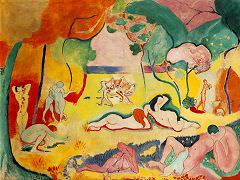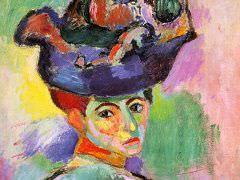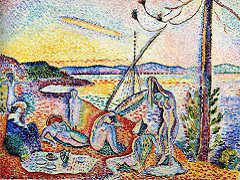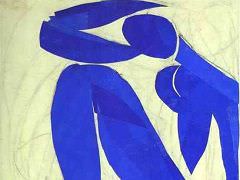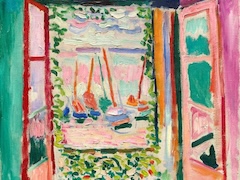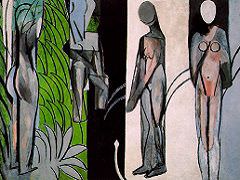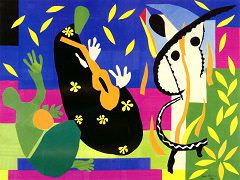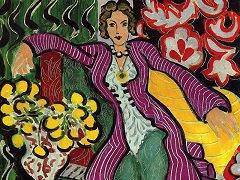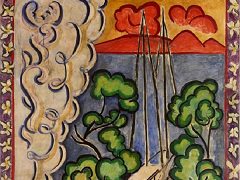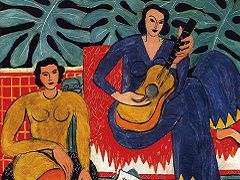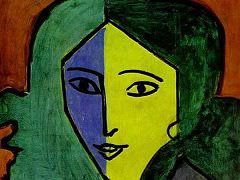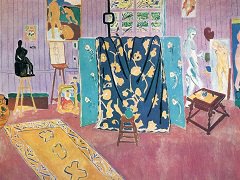Woman with a Veil, 1927 by Henri Matisse
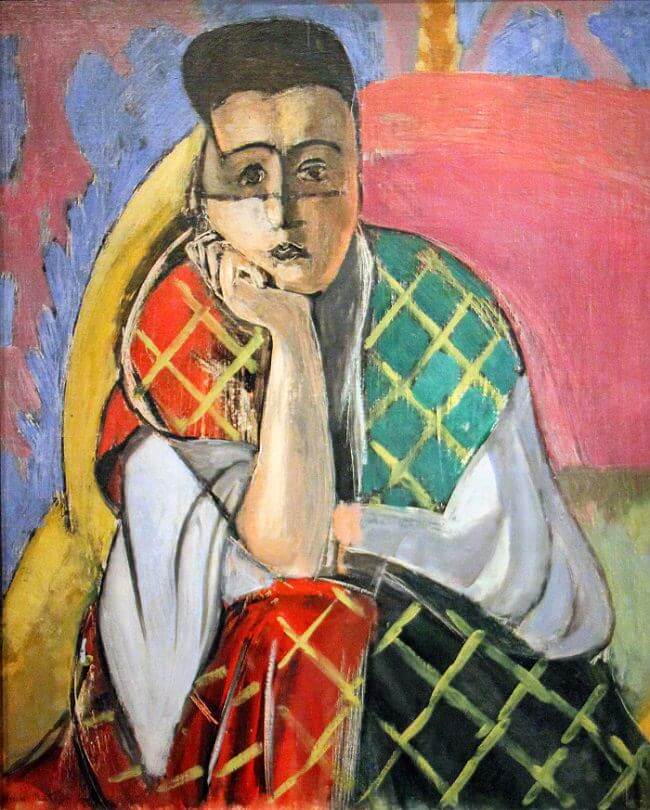
Portraits figure in large number in Matisse's work, and he was sufficiently attached to them to produce a luxurious album devoted to their reproduction at the end of his life (Portraits par Henri Matisse, published by Andre Sauret, Editions du Livre, Monte Carlo, 1954). The book is prefaced by a brief introduction by the artist himself. This ravishing picture is a portrait of the woman who served as the model for Woman with Aquarium, and whose features seem recognizable in other paintings of the twenties.
The rich, sonorous color of this intense study is an extreme statement of the artist's palette at the time. It is also worthy of comparison with the great Fauve portrait of his wife, The Green Stripe, where the color harmonies are in a totally different, more dissonant key. The structure of this starkly frontal pose suggests something of the angularity of the model in Decorative Figure. The woman's body seems enveloped in an enormous stole of a diagonal checkered pattern. The local colors, save for the flesh tones and the gray, diaphanous sleeves, seem to be largely of the artist's invention. The red, green, and yellow are close to the hues Matisse normally employed as a Fauve, but the atmosphere of the picture is transformed into something more luxuriant by the violets and pale blues of the background. The pose of the head, balanced on the model's hand, and the insistent relation of the body to the contour of the chair are suggestive of Ingres. Interestingly enough, in the next few years Matisse's art would offer increasing analogies to the work of this nineteenth-century academic master, notably in Pink Nude and The Blue Nude. In his nudes and odalisques of the early 1920s, Matisse had already explored Renoir's ways of treating a classical theme. Now he turned, logically and methodically, to a rephrasing in his own manner of elements drawn from Ingres's even purer Neoclassicism. By turning in Ingres's direction at the end of the twenties he was echoing a tendency that had emerged a decade earlier in the work of his greatest rival, Pablo Picasso. At the same time, this new influence in Matisse's art was completely consistent with his own inner development, and would shortly be revealed in the murals and the book designs of the early thirties.

